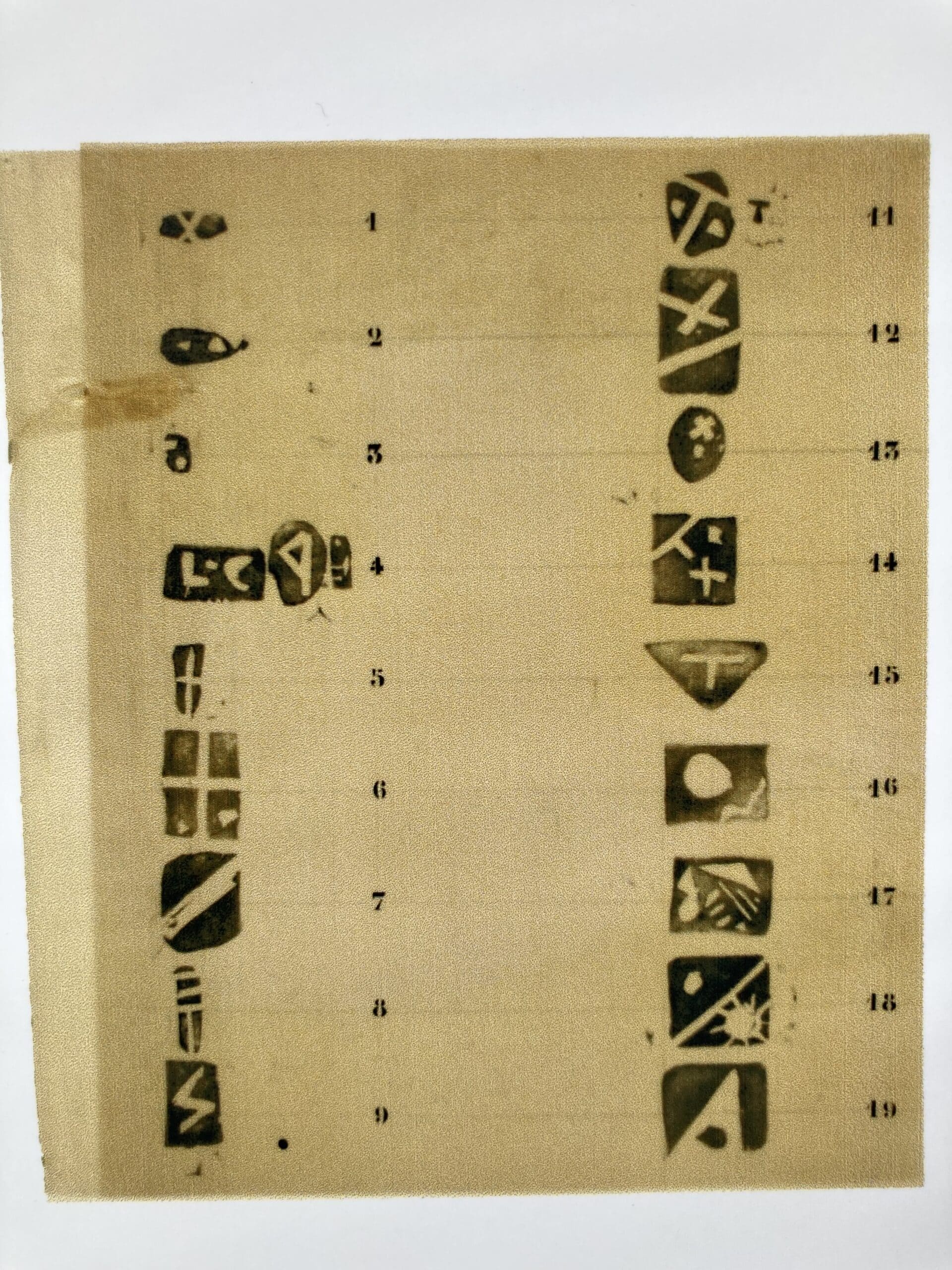Notes on Twelve drawings for the Governor’s Palace at Chandigarh
Drawing Matter was introduced to José Oubrerie by Stan Allen after publishing his text Just Begin in July 2020. Oubrerie worked for Le Corbusier on the Brazilian Pavillion at the Cité Universitaire in Paris in 1958 and in the Atelier at 35 Rue de Sèvres from 1959 to 1965. The following text is the second in a series of two transcriptions of informal email correspondence in which Oubrerie provides commentary on drawings for buildings in the Chandigarh Capitol complex that are now in the Drawing Matter collection.
Here, Oubrerie examines twelve sheets from a sketchbook given to Guillermo Jullian de la Fuente by Le Corbusier. The drawings are in Le Corbusier’s own hand and, as Oubrerie explains, are typical of him ‘ “attacking” a problem in plan and researching its solution; each move in the succession of drawings results from what sometimes he would call a lecture de situation.’
The correspondence has been lightly edited.


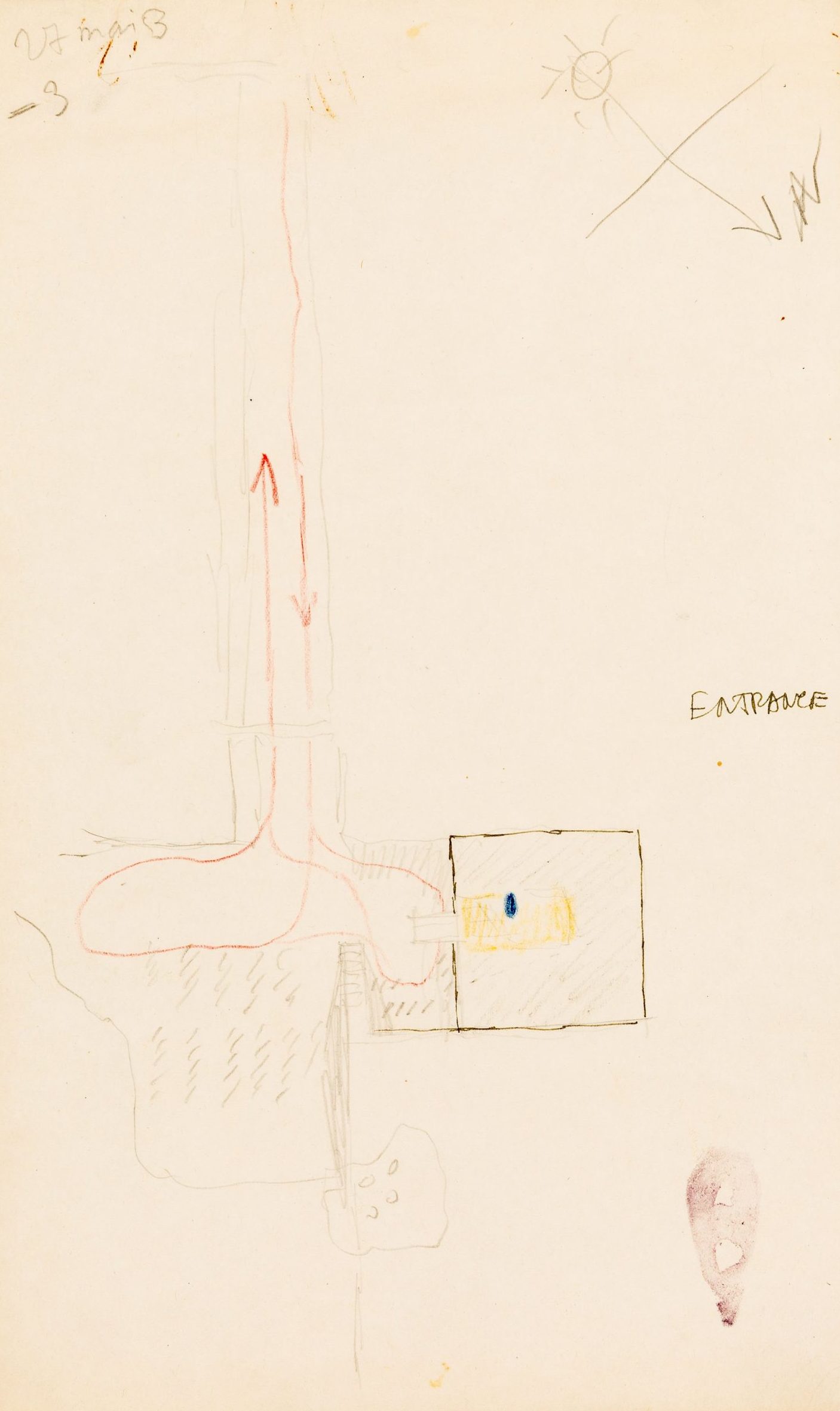

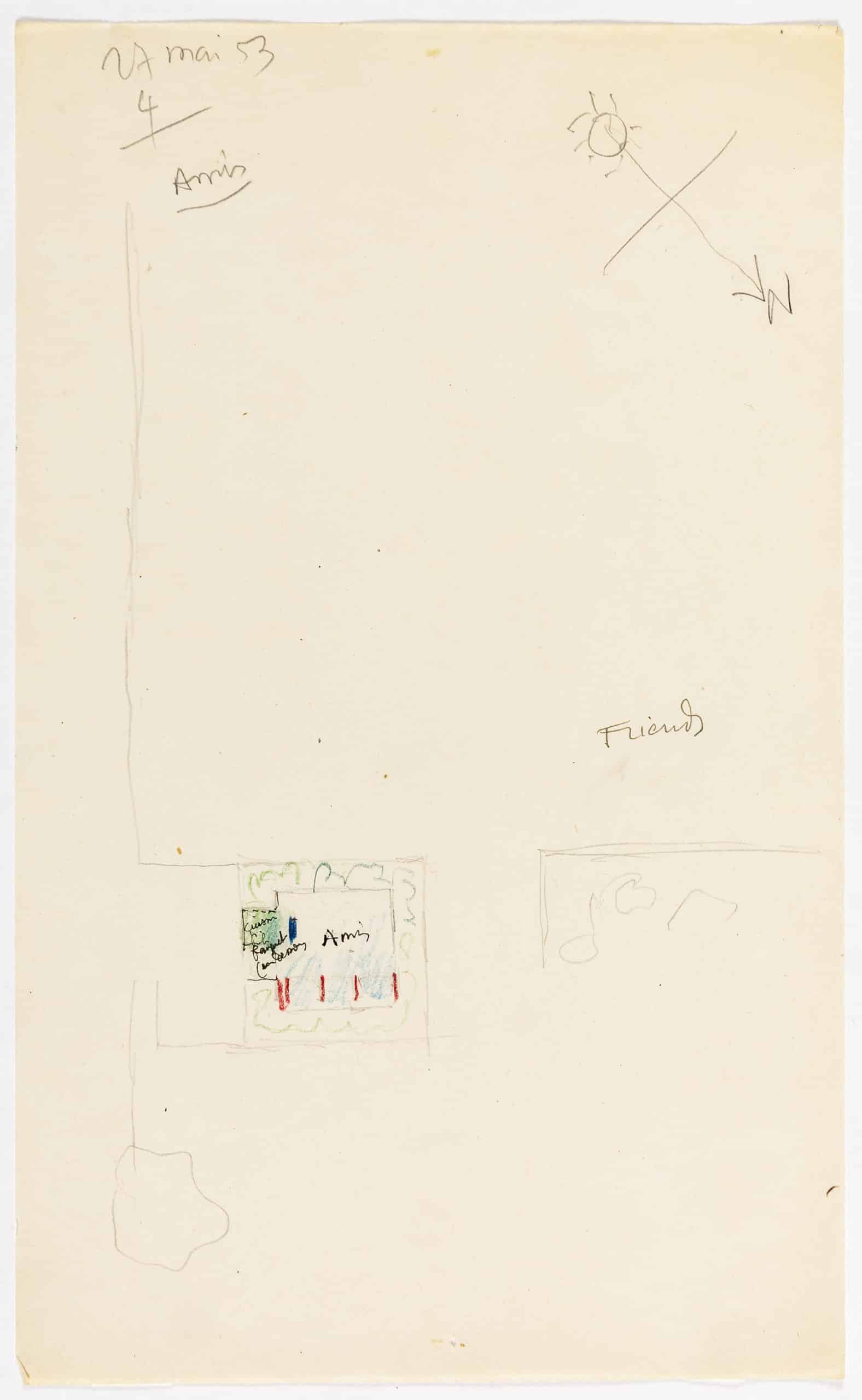







Above: Le Corbusier (1887–1965), Sketches for the Governor’s Palace, Chandigarh, India, 1953. Pen, pencil and coloured pencil on paper, torn from a sketchbook in the late 1950s, 330 × 203 mm. DMC 1424.1–12.
20 July 2020
I downloaded the 12 drawings, I could read the letters, etc., using my computer features about exposure, temperature, etc., to make the things more precise, bigger, etc. …
Just some little additional questions: what is their size (it looks to be letter size)? And what type of paper is it? What did he use for the colours (looks like his usual colour pencils)?
One drawing per page (no recto verso)?
Now I have some homework to do but it is very similar to the usual process of work of L-C. The last drawing is clear about the profile and organisation of the different parts of the programme.
Thank you very much.
Jose O
21 July 2020
Dear Jose,
In answer: the colouring is uniform between the sheets (those that have colour), and seems to me to be coloured pencil, as you say. All sheets are drawn on one side only.
The sheets divide into four groups, by paper and by dating.
A) 26 May: 2 sheets, on slightly heavier paper than B and C, each 27 x 17cm, with evidence that these were at some point held together with a paperclip, together with D below.
B) 27th May: 6 sheets, numbered 3–8, on very delicate paper, each 26cm x 15.8cm. Apparently from a sketchbook, but very carefully cut and removed.
C) 28th May: 2 sheets, numbered 1and 2, ditto re paper type and size, etc per B above. Evidence that these may have been paper-clipped with A and D above at some point.
D) Elevation drawing – undated, same paper and dimensions as A above.
Hope this is helpful. Do keep the questions coming!
Vbest
Niall
31 July 2020
Dear Niall,
Sorry for this long silence but I am back on your drawings, which are studies for the Chandigarh Governor’s Palace project, which was supposed to be the crown of the Capitol group of buildings housing the 3 powers: Legislative = Palace of the Assembly (see your Xenakis section of the Main Assembly Room); Executive = the Governor’s Palace; Judiciary = The High Court building.
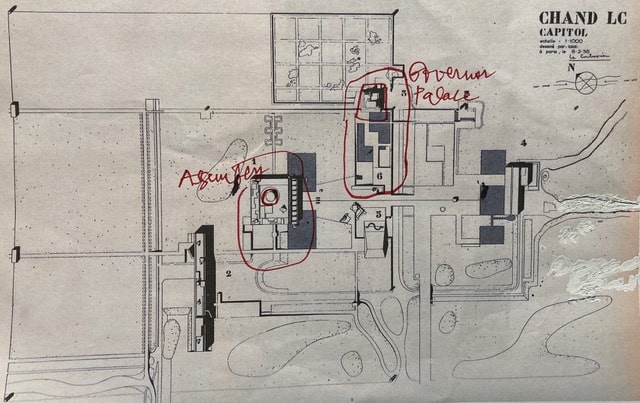
I will send you some extracts of the Le Corbusier Complete Works where these buildings are shown at different states of study and/or construction. The drawings of 2 stages of study of the Governor’s Palace are in the 46–52 and 52–57 Volume (the work done at my time is in the 1957–65 Volume).
I will send you this weekend my commentaries about the sketches which concern mostly positioning the kitchen and the services necessary to each floor and superimposed in the same area of the project. L-C is especially concerned with the control of cooking odours.
All drawings are from May 53, one is not dated, the section and plan. But the project was well developed in 1952 and I will give you an example of the 2 stages.
Hope this will be helpful developing a better understanding of some of these drawings in your collection.
Cordially,
Jose O
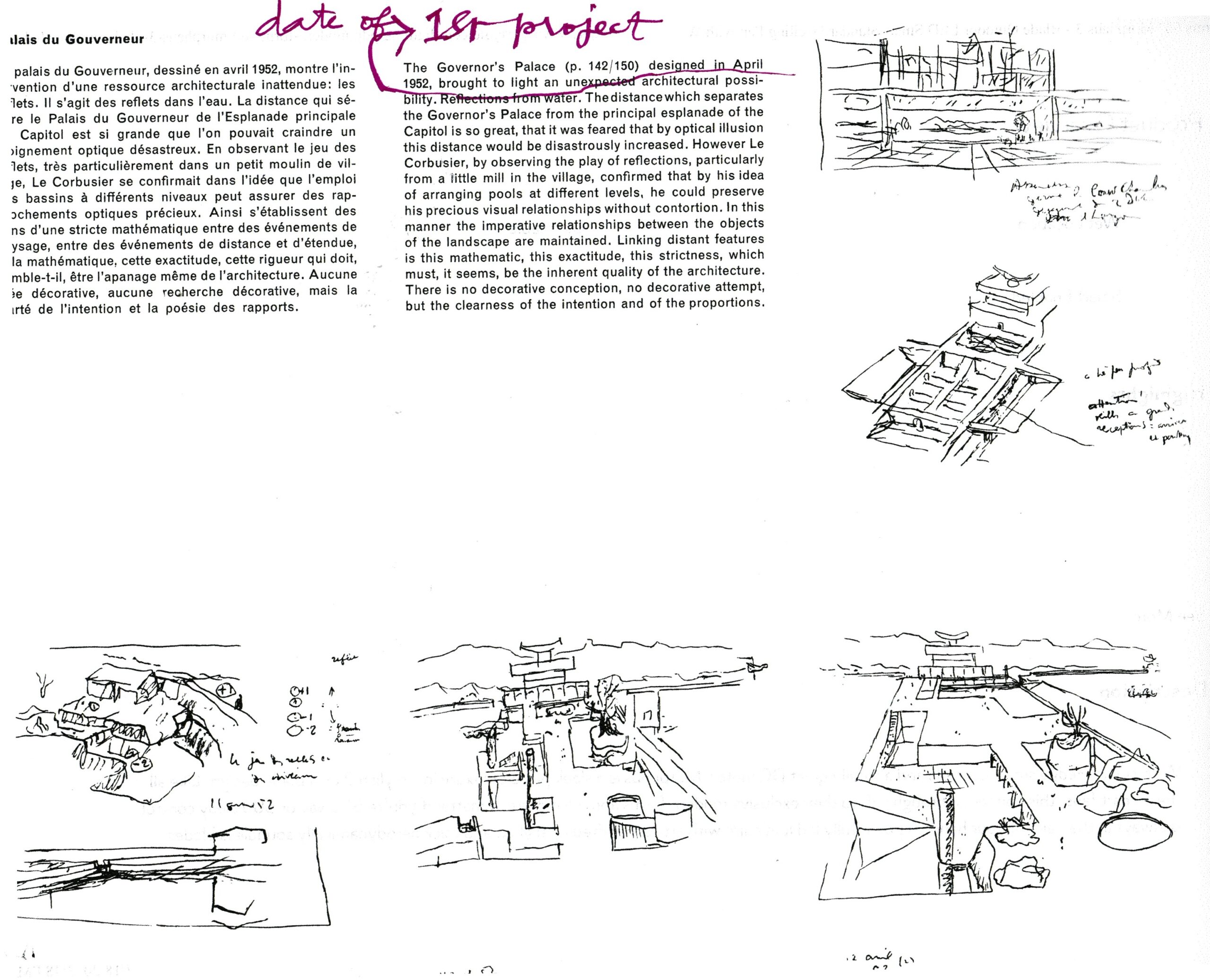
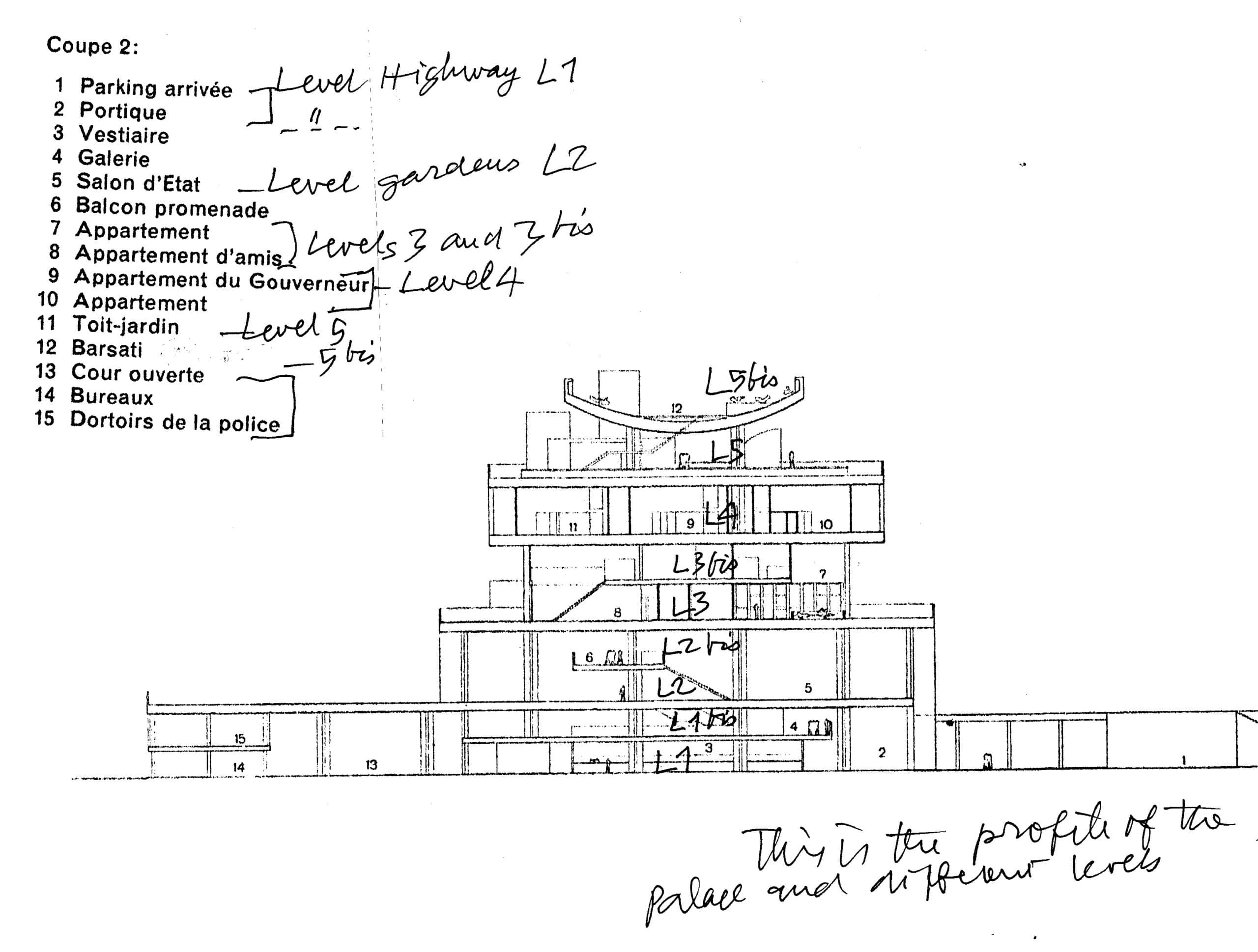
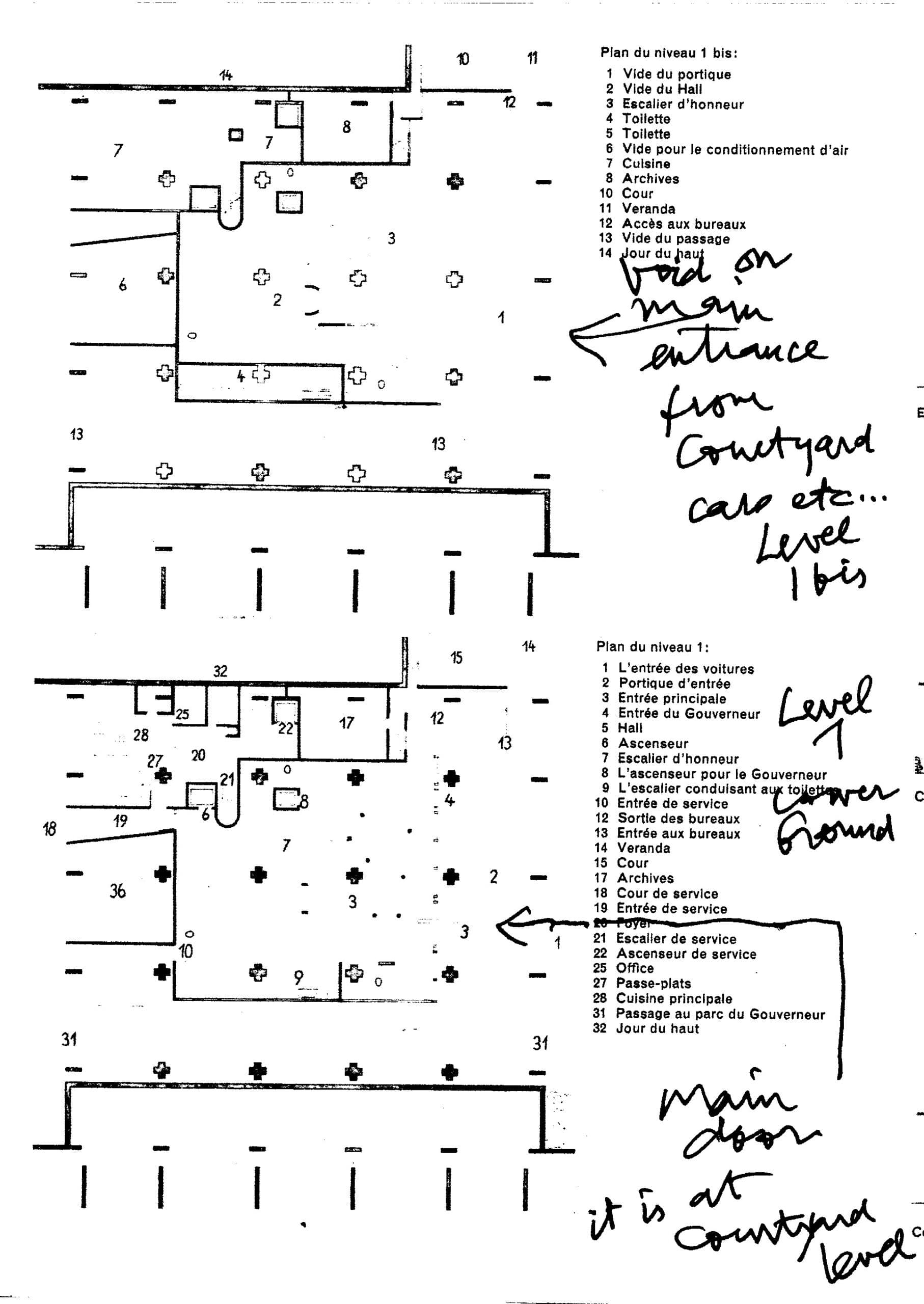
7 August 2020
Dear Niall,
Actually you have everything of what I normally look for in your sketches, the only thing I do not have is the confirmation of the stamp made with some eraser, different one for each of his trips in India… I will verify it, but I have to find the good box in my storage!
OK, look at this stuff and if you have questions I could perhaps answer… I have manipulated some of the drawings in terms of colour or exposure to have them more readable… Now if you want to understand better how L-C was working with us it is some kind of work and it would take a little time, let me know if you want to do that…
All the best and cordially,
Jose Oubrerie
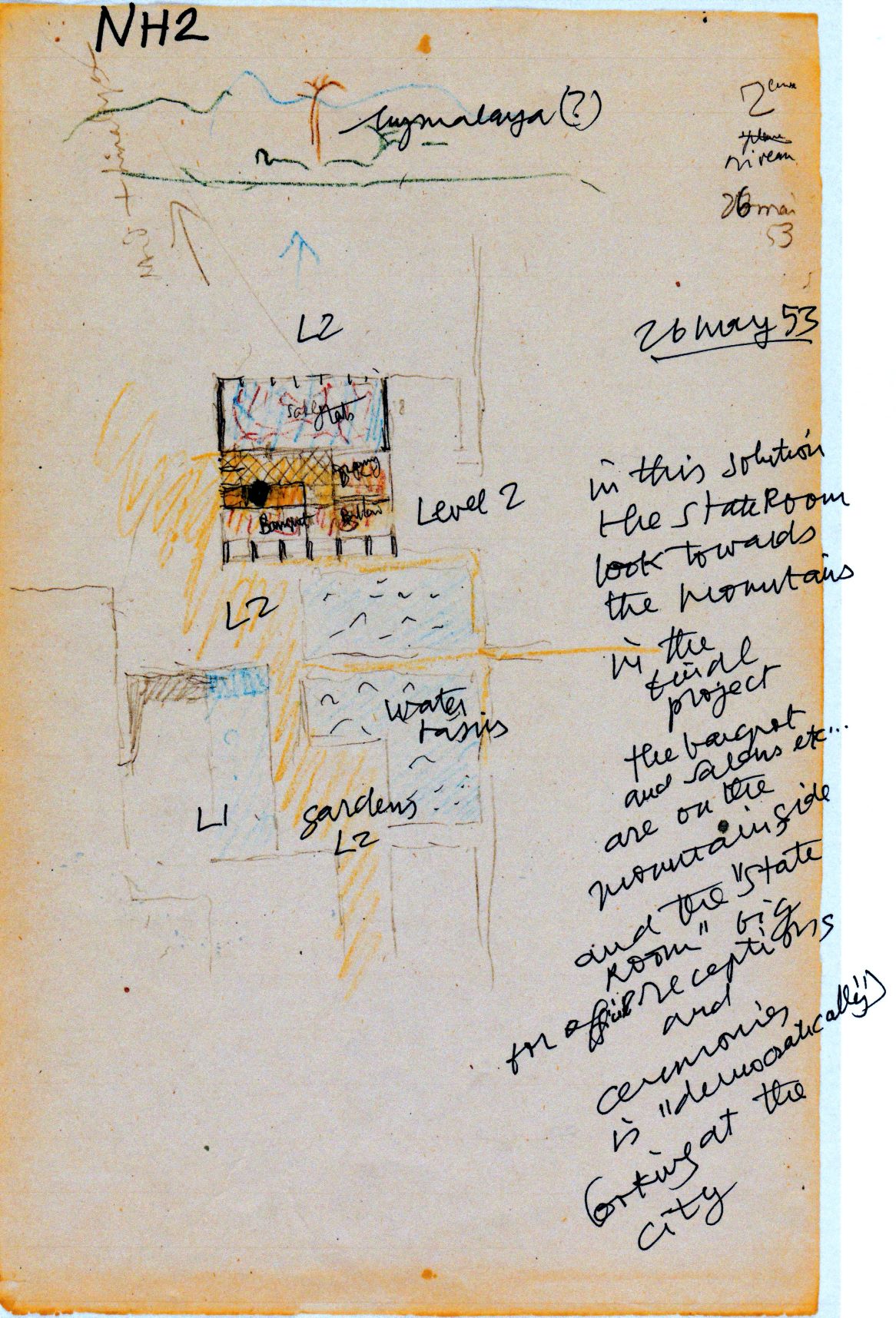
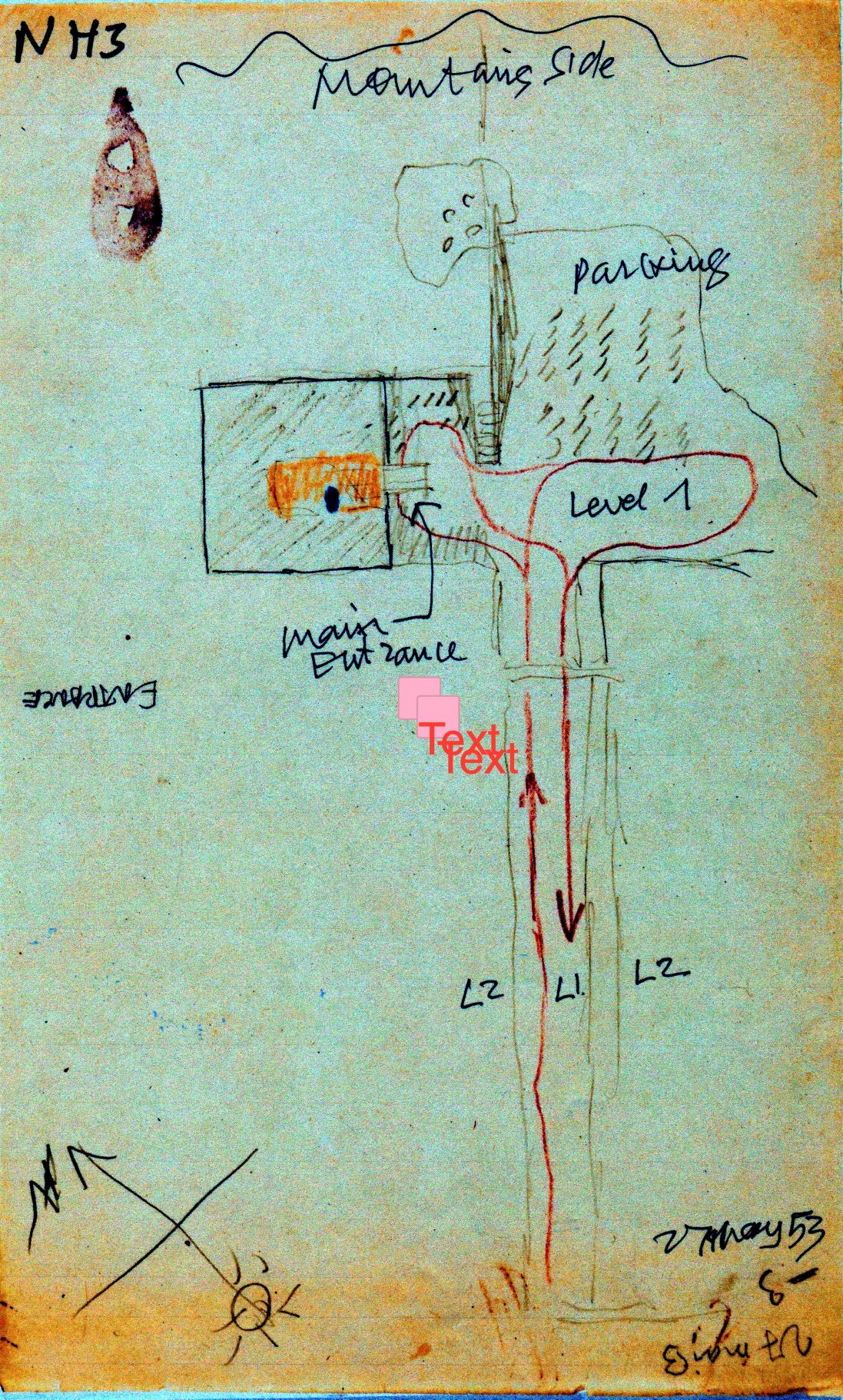
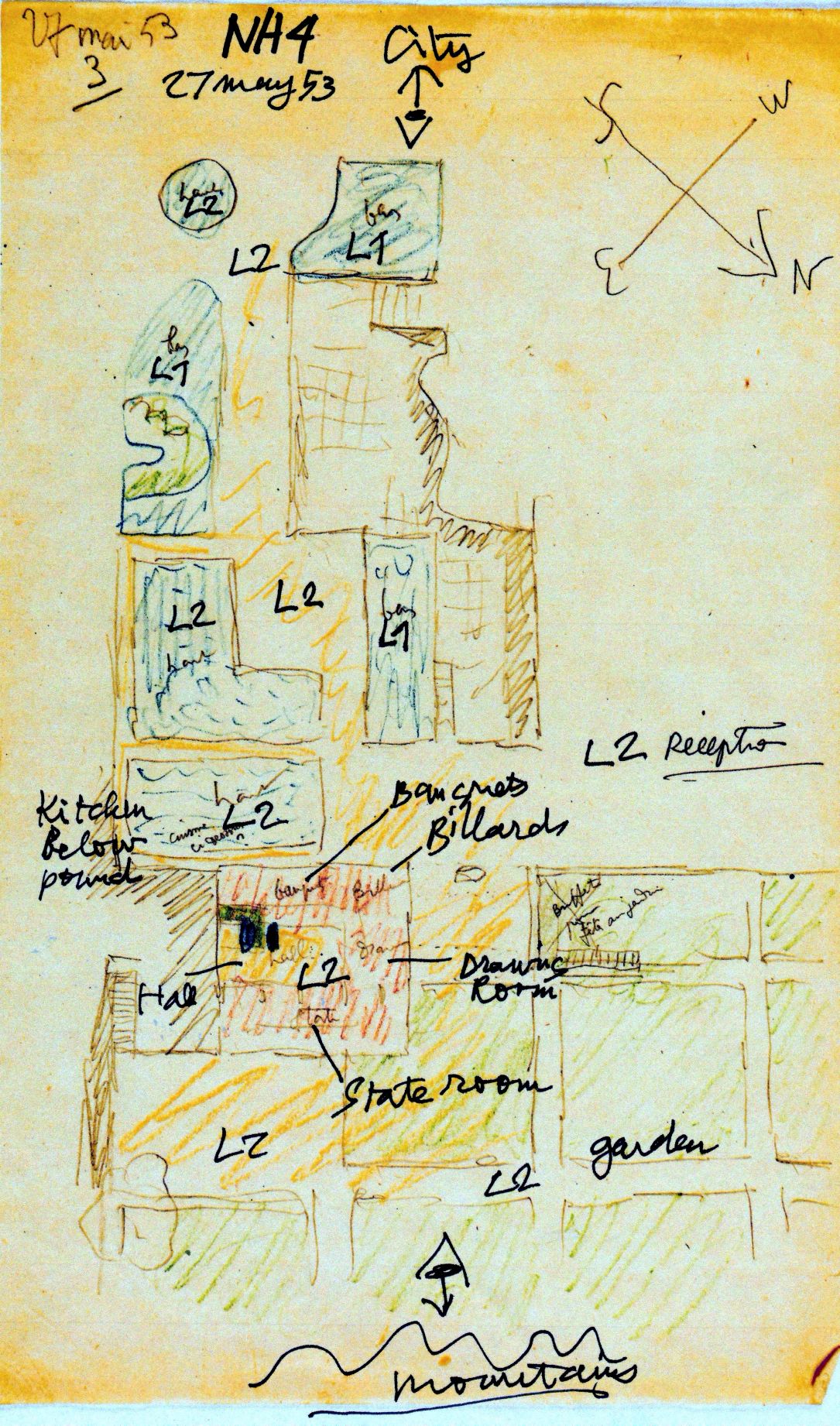
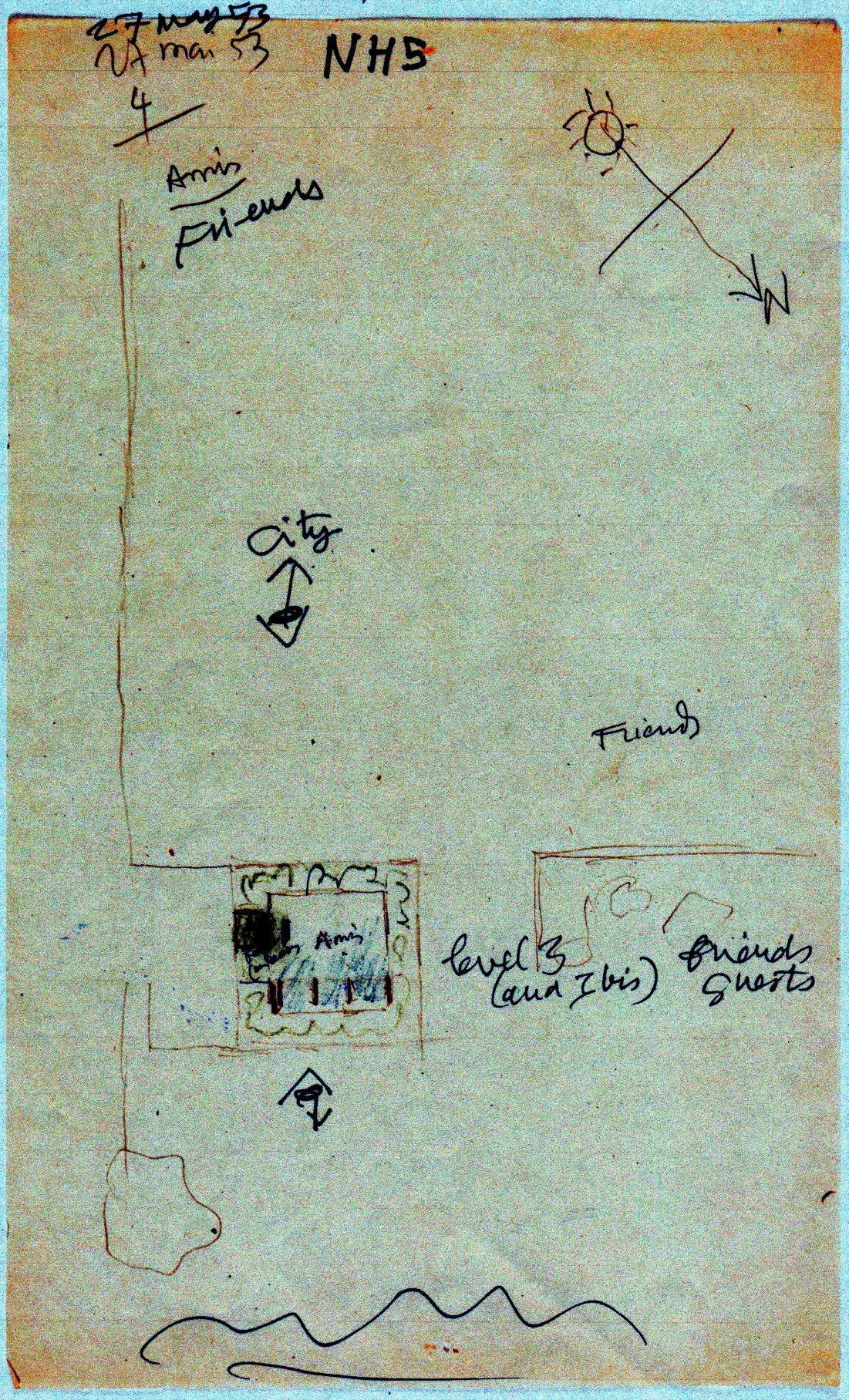


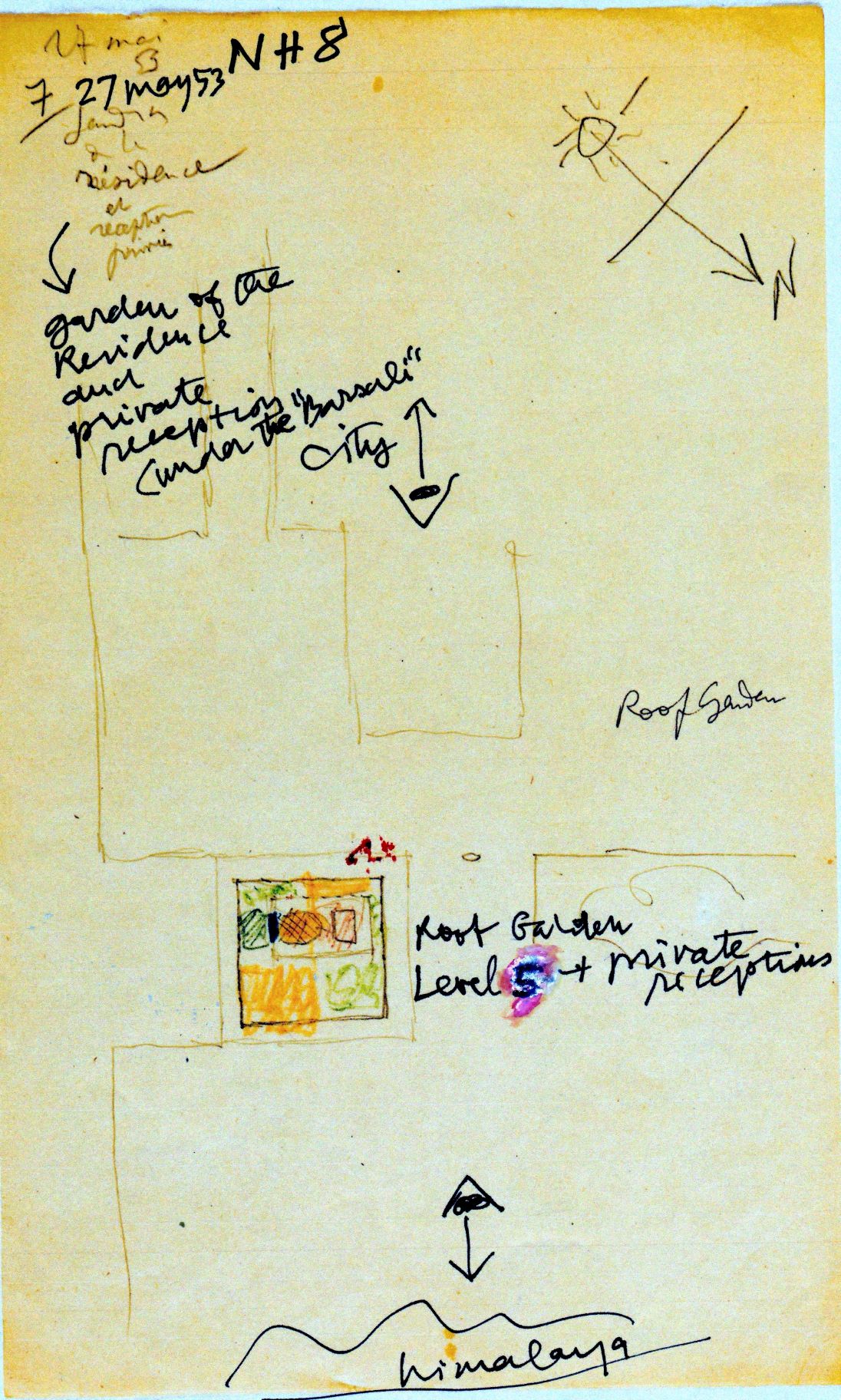
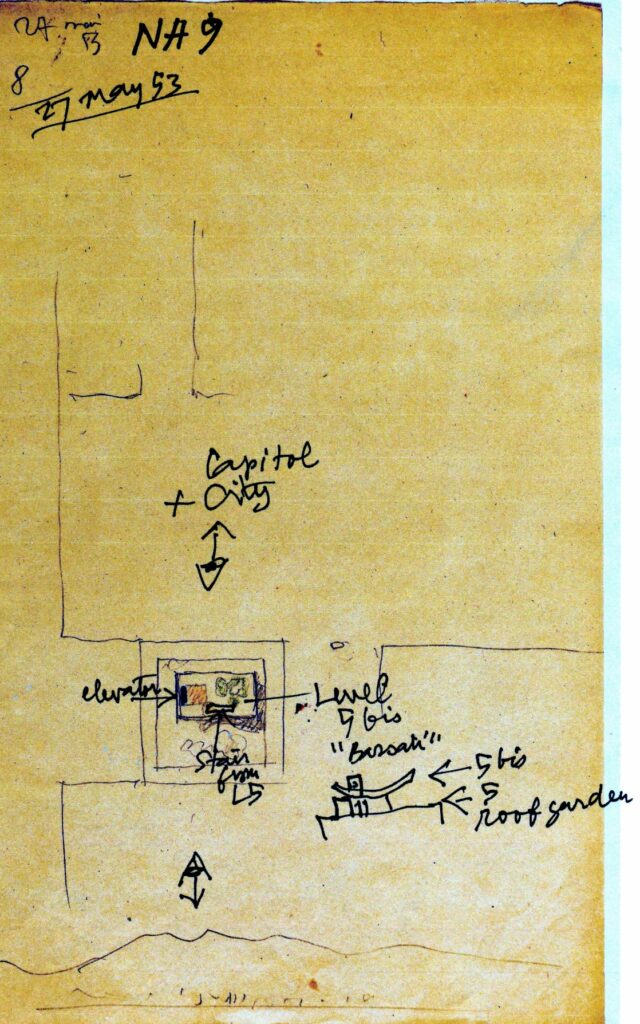

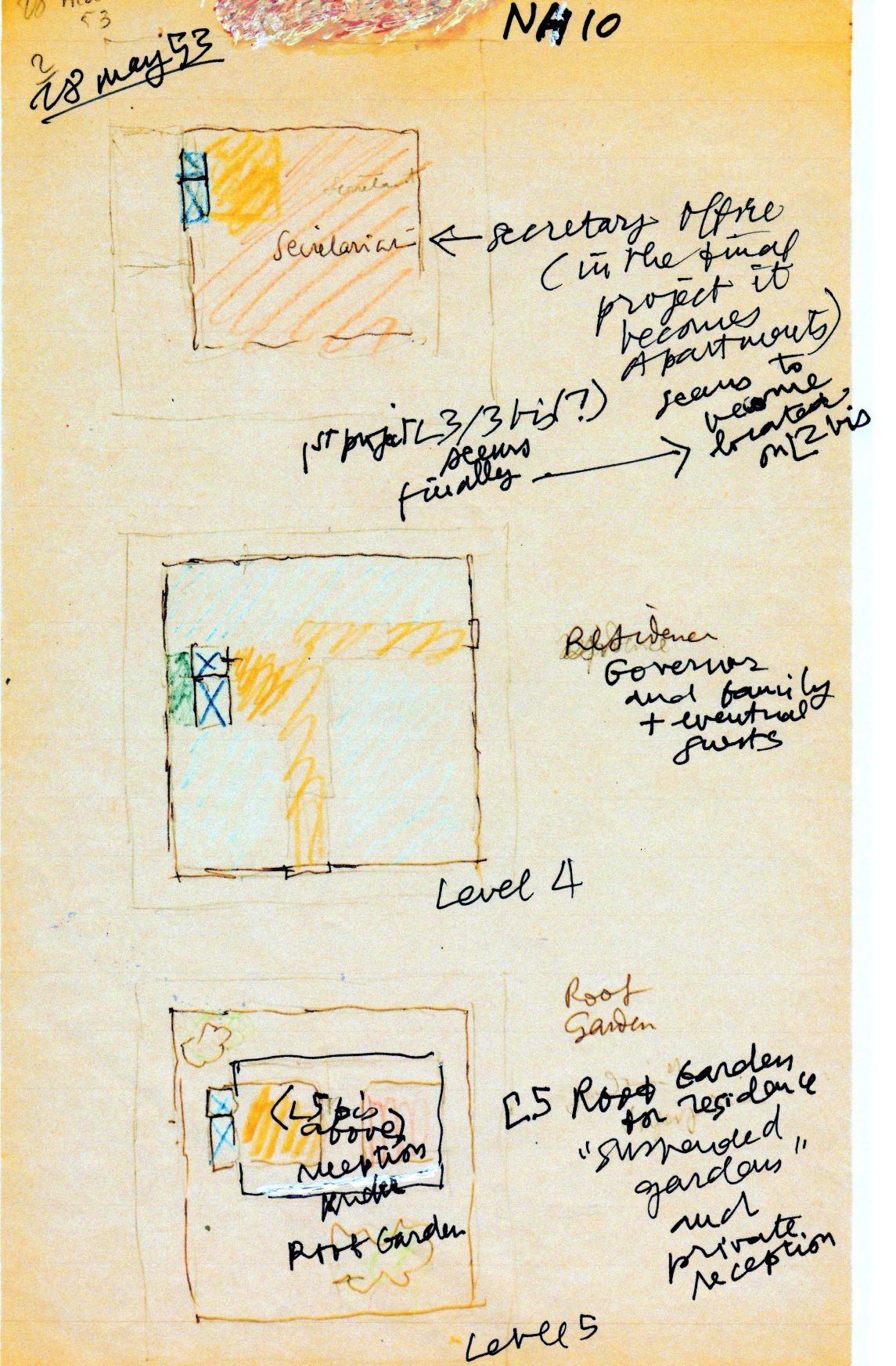
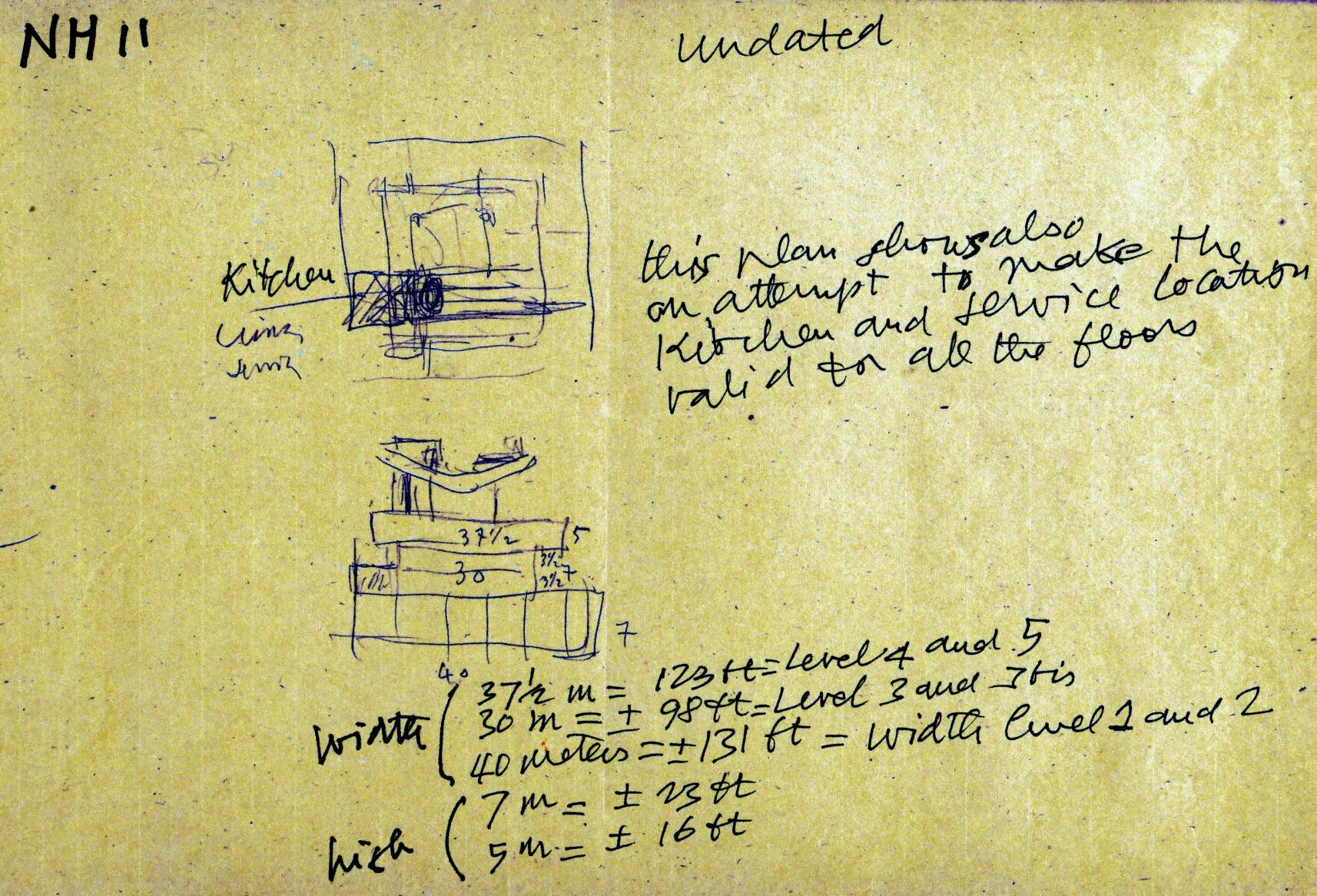
8 August 2020
Dear Jose,
This is all wonderful to see, and works as a very powerful way of elucidating the drawings. We would love to publish your analytic sheets just as they are, in sequence, as an example of highly engaged research – of a supremely knowledgeable person looking hard at the sketches, and interpreting them.
Warmly, and with thanks again.
Niall
22 August 2020
Hi Niall,
I hope this find you well…Just to keep you informed … I contacted the FLC in Paris as I want to know at which trip of Corbusier in India these sketches were done and identify this with the rubber stamp present on 2 of the drawings, but I have to wait as the Foundation is closed till the 31st of August…sorry…
I let you know ASAP of my conclusions after this date….
Cordially,
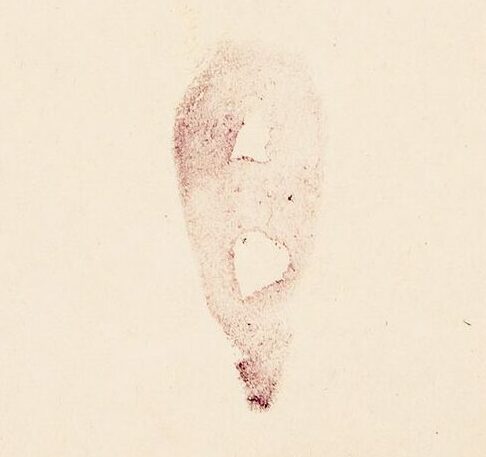
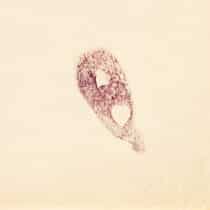
2 September 2020
Dear Niall,
Finally Arnaud is back in Paris at the Fondation which is still not open to the public but he sent me the ‘Calendrier des Signes’ associated to the voyages a Chandigarh de L-C.
As all of your drawings were executed in May 1953, this date corresponds to the 5th Voyage of L-C to Chandigarh which is identified by a specific sign which is NOT the one corresponding to the one stamped on two of your drawings, the NH1 and NH3. This sign correspond to the second trip of L-C which took place between October 20 1951 and November 27, 1951. So this is a little mystery which is difficult to elucidate. Did Corbusier reuse in 53 the 2 old sketches studies from 51 and dated it at this time as made in 1953? Possible… he was very well capable to do that. The goal of the sketches was to research a solution to position the kitchen to be able to work in all the floors… Perhaps Doshi could tell, I can ask him… so all the drawings in May 53 in anyway were made in May 53, stamped or not. All the others had no stamp which shows also that they were explorative and not final I think, the discussions were made in the Chandigarh’s office but brought back to Paris as the plans were finalised there.
So this is my temporary conclusion. I hope that this will satisfy your curiosity… one of the problems is that many of the actors in Paris or Chandigarh are not anymore alive… I am the last one of our group of 3 and quite old…
I remain at your disposal for any eventual questions …
Amicalement….Jose Oubrerie
